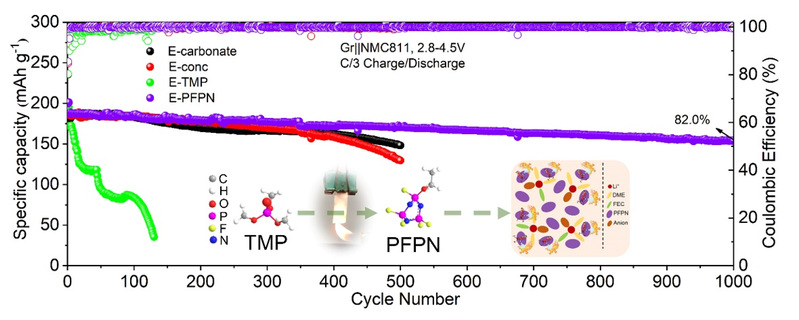
Nonflammable electrolytes are critical for the safe operation of high-voltage lithium-ion batteries (LIBs). Although organic phosphates are effective flame-retardants, their poor electrochemical stability with graphite (Gr) anode and Ni-rich cathodes would lead to the deterioration of electrode materials and fast capacity decay. Herein, we develop a safety and high-performance electrolyte formulation for high-voltage (4.6 V-class) LIBs using flame-retarding ethoxy(pentafluoro) cyclotriphosphazene (PFPN) as a non-solvating diluent for the high-concentration carbonate-ether hybrid electrolyte. In contrast to conventional nonflammable additives with restricted dosage, the high level of PFPN (69% mass ratio in our electrolyte design) could significantly increase the electrolyte flash point and protect the favored anion-rich inner solvation sheath because of its non-solvating feature, thus preventing solvent co-intercalation and structural damage to the Gr anode. The nonflammable electrolyte could also form a stable LiF-rich cathode electrolyte interphase (CEI), which enables superior electrochemical performances of Gr‖NMC811 full cells under high voltages (~82.0% after 1000 cycles at 4.5 V; 89.8% after 300 cycles at 4.6 V) and high temperatures (50 oC). This work sheds light on the electrolyte design and the interphase engineering for developing practical safe high-energy-density LIBs.



